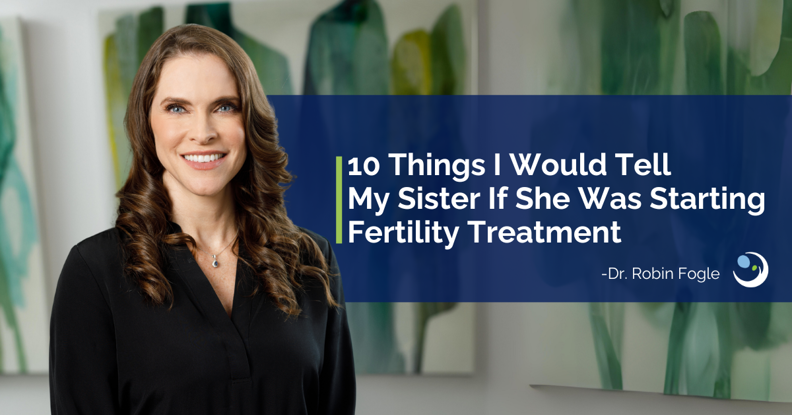Egg Freezing: Delaying Pregnancy Until You Are Ready
- Category: Fertility Preservation
- Written By: Atlanta Center for Reproductive Medicine

There has been a tremendous shift in society over the last 50 years regarding childbearing. It used to be common for women to begin – and often complete – their families in their twenties. As more women have pursued higher education and joined the workforce, however, the average age when pregnancy is first pursued has risen steadily. Although it is a wonderful development of the last half-century that women can be full participants in the workforce and all aspects of social life, the downside is that for some individuals, this delay in childbearing can have significant biological repercussions.
Why Is It More Difficult for Older Women to Get Pregnant?
As everyone knows, pregnancy becomes increasingly difficult as women age. We have always known that there is a decrease in conceptions, which is accompanied by an increase in miscarriages as well as in children with genetic issues such as Down's Syndrome as women age. These observations are a consequence of changes to the eggs over the passage of time. We can be certain of this because of the proof that treatment using Donor Eggs provides. Today we know that we can retrieve eggs from a donor in her twenties, fertilize those eggs with sperm and then transfer the ensuing embryos into the uterus of women in menopause. That menopausal woman is able to conceive and carry as if she were in her twenties proving that the observed declines are not a consequence of an aging uterus or less potent hormones, rather it is the consequence of changes to the eggs.
Today we can freeze eggs and stop their deterioration. Using IVF technology, we can retrieve eggs from a woman's ovaries and freeze them. Even though they may be kept frozen for years, upon thawing they perform as they would have on the day they were frozen. It's as if we can stop time! Eggs that have been frozen and then thawed, perform essentially in the same fashion, with the same outcomes as they would have if they had not been frozen at all.
About the Egg Freezing Process
The process itself is straightforward and typically takes about one month to complete.
Synchronization
The first part of the process begins with a menstrual cycle. At that time, the ovaries are prepared by giving them a “vacation.” Typically birth control pills are used for a couple of weeks. During this phase, the existing follicles have a chance to synchronize thereby setting up a cohort, ie a group of eggs ready to grow together. This also facilitates the scheduling of the process overall.
Stimulation
Once synchronization has been achieved, the stimulation can begin. During this time, daily subcutaneous injections of hormones are used to stimulate the growth of multiple follicles. These injections are easy to do at home. These are the same needles that diabetics use for their daily insulin injections. Most women find they can do these injections themselves.
Typically the stimulation will take about 10-12 days in total. During the stimulation, we monitor the growth of the follicles (and indirectly the eggs) via vaginal ultrasounds and blood tests. These visits become increasingly frequent and become daily at the end of the process for 3-5 days in a row. Each visit is fast, just the time needed to draw blood and do an ultrasound, so most women are in and out of the office within 30 minutes. Although each visit is not a big deal, the fact that they become so frequent makes for a very busy week.
Egg Retrieval
The stimulation culminates with egg retrieval when the eggs are removed from the ovaries. This process is carried out under IV sedation so the women are asleep through the process. The aspiration of the follicles is done under ultrasound guidance and usually takes less than a half-hour.
Upon completion of the aspiration, the sedation is stopped and the women wake up, typically describing menstrual type symptoms. Because IV sedation has been used, this is the one day in an egg freezing cycle in which women cannot drive themselves or go to work.
All in all, the process takes about one month, the last week of which is busy with 3-5 office visits. In the previous 3 weeks, we may see the patient once or twice.
What Happens Next?
Once the eggs are frozen, they will last indefinitely for all practical purposes. If they are thawed and fertilized 10 years later, they will function essentially as they would have on the day they were frozen. A 40-year-old woman can, therefore, reproduce with her 30-year-old eggs. It is a mind-boggling concept that a woman can serve as her own egg donor to her future self!
Egg freezing is a tool that can revolutionize a woman's reproductive life. Women no longer need to feel pressured to get pregnant just because their “clock is ticking.” The uterus does not seem to age from a practical point of view and as egg donation has shown, menopausal women can successfully carry the pregnancy. This observation coupled with egg freezing will allow women to have their pregnancies when they are ready to do so rather than under pressure from a biological standpoint. An amazing change in human reproduction!


